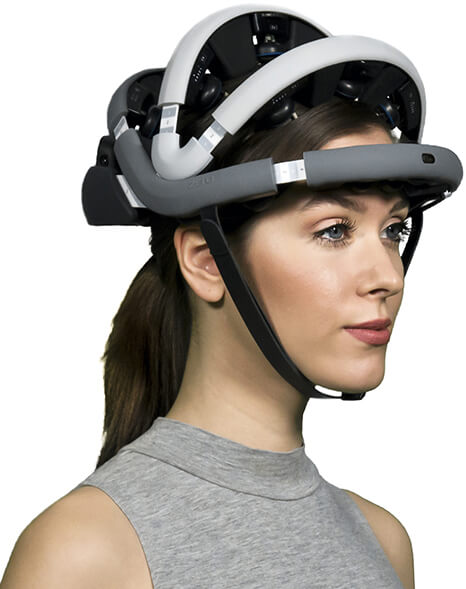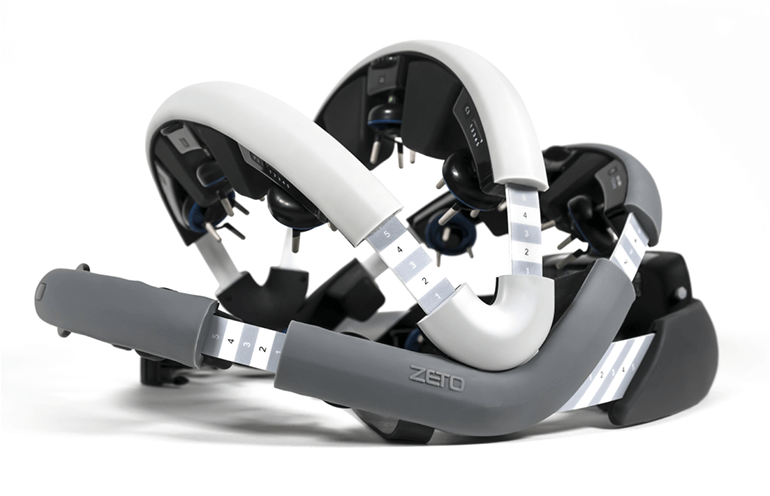Electroencephalography (EEG) devices are incredibly helpful in diagnosing and monitoring certain brain disorders, such as epilepsy and strokes. However, they are not particularly user-friendly or convenient, with specialized technicians performing time consuming procedures, such as skin preparation, to get patients ready to undergo the procedure. A combination of messy gels and wires also makes for an uncomfortable and inconvenient experience for patients.

In response, Zeto Inc., a medtech startup based in California, has developed a new EEG device that sits on the head like a bicycle helmet. The headset does not require gels or pastes to function, and can transmit data wirelessly. The company claims that the new system can reduce setup times from the current 20-30 minutes required with conventional systems to just five minutes, potentially making the Zeto device very useful in emergency situations. Best of all, the headset does not require a specialized technician for setup and use, and so could be quickly applied by nursing staff or other clinicians.
The device is currently being trialed at Methodist Le Bonheur Healthcare in Memphis, Tennessee, to see how it compares with traditional EEG equipment in a clinical setting.
Here’s a video intro from Zeto Inc. about the company’s technology:
Medgadget had the opportunity to talk to Aswin Gunasekar, Founder and CEO of Zeto Inc., about the technology:
Conn Hastings, Medgadget: Please give us an overview of conventional EEG devices, and their limitations.
Aswin Gunasekar, Zeto: Conventional EEG devices require a trained EEG technologist to measure the head, mark electrode locations, abrade the skin, and apply paste and electrodes to the scalp, eventually tethering the patient to a box with wires. This procedure consumes time, requires technologists who need to be perpetually on-call, and puts the patients through a needlessly poor experience. The scarcity of EEG technologists makes the problem worse, and even unfeasible in many hospitals, emergency rooms and other outpatient settings. Essential features such as easy data access and remote interpretation remain unavailable for conventional EEG devices.

Medgadget: How does the new device developed by Zeto compare with conventional EEG in terms of speed and ease of use?
Aswin Gunasekar: Zeto’s Instant EEG Platform (zEEG) provides the first FDA cleared zero-prep, wireless, dry electrode headset that can be used to perform a routine or urgent EEG anywhere without the need for a trained expert. The device is quickly and easily placed on the patient’s head much like a bicycle helmet. Data are streamed via a HIPAA compliant cloud platform that provides live viewing, tools for analysis and optional remote interpretation by neurologists. Time to interpretable EEG is typically 5 minutes with built-in positioning as per the international 10-20 EEG system. Total overhead time for set up and patient clean up with the Zeto headset is typically under 10 mins compared to over 45 minutes with conventional EEG.
Medgadget: Given the current pandemic, how does the Zeto EEG device help with reducing the potential for viral transmission?
Aswin Gunasekar: Due to the convenience and simplicity of Zeto’s EEG technology, PPE and exposure time for healthcare workers is reduced significantly. The headset utilizes single-use, disposable electrodes and an optional liner which reduces contact between the patient and the reusable headset, reducing the risk of contamination. Zeto has not yet performed studies on reducing viral transmission. However, the faster setup, zero patient clean up and the ability to monitor the recording with live video from outside the room helps reduce exposure of staff.
Medgadget: What types of mobile devices are compatible with the Zeto EEG device? Is the mobile interface easy to use?
Aswin Gunasekar: Most laptops, desktops and mobile devices capable of running the latest version of Google Chrome web-browser are compatible with the Zeto EEG device. Users of zEEG devices are provided with web-based access, an EEG study manager, video review, annotation features, time-frequency analysis, report generator, analytics and automated software upgrades. The mobile interface – as well as that of laptops and desktops – is simple, intuitive and easy-to-navigate.
Medgadget: How are data transmitted and how do you deal with data security?
Aswin Gunasekar: The security of our customer and patient data is of foremost importance to us. Zeto employs Design, Technical, Physical and Compliance controls to ensure the integrity and availability of the data on our platform. Data are transmitted with industry-standard AES encryption on the move and at rest. Data access is controlled through strict authentication and authorization protocols. The Zeto Cloud Platform is compliant to HIPAA rules, FDA 21CFR820 cybersecurity requirements and NIST SP800-53 Cybersecurity controls, and all Zeto personnel are HIPAA trained.
Medgadget: Please give us an overview of the current trial of the device at Methodist Le Bonheur Healthcare in Memphis, Tennessee.
Aswin Gunasekar: Methodist Le Bonheur Healthcare is the very first hospital system globally to participate in the ongoing trial that compares the capabilities and benefits of Zeto’s EEG technology against traditional EEGs. The trial conducts 3 phases, namely 1) Inpatient (ICU) EEG for detecting subclinical seizures and status epilepticus, 2) Outpatient EEG with trained EEG technologists and 3) Outpatient EEG with staff who are not certified technologists. The current trial could result in a clinical breakthrough that transforms how we approach EEGs in the future.
